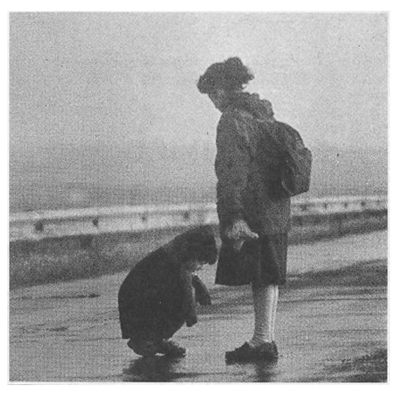| Thomas Ruff Zeitungsfoto 059 (Newspaper Photo 059), 1990 |
| Photograph | C-Print |
| 27 x 27.6 cm |
 |
| Thomas Ruff’s interest in photography lies in the uses images have in our society, so his work should be understood as an exploration of those uses and the construction of individual perception upon them. It should therefore come as no surprise that Ruff began to cut out photographs from newspapers and keep them, attracted mostly at first by the relationship the press establishes between text and image, the way in which photography is always treated as illustration of the text (which is, by necessity, a falsely justified relation), the frequent ambiguity of the captions that describe the photographs, and so on. The collection of images from newspapers began in 1986. In a way it may recall other photograph-collecting projects such as Gerhard Richter’s Atlas, except that in Ruff’s case the collection is deliberately restricted to photographs taken from the press. The selection criterion is rather ambiguous and has nothing to do with subjects or techniques; it is merely a matter of ‘restoration’, of preservation. Ruff himself remarked in an interview that he cut out the images simply because their photographic qualities seized his attention: “And sometimes a news photo exerts its charm on me, photographic qualities that I don’t want to see lost. And that’s why I remove them from the newspaper, in order to present them in a different way, to restore some of their pictorial status.” A press photograph is the kind most prone to the evident manipulation to which any image can be subjected because it is cut out and may not even relate to the news item it is supposed to illustrate. After two years collecting Ruff decided to start work with the images. He introduced a whole series of variations and entitled them “Zeitungsfotos”. From the newspaper image he made a copy, since the original paper turns yellow very quickly, enlarged it and eliminated the caption. With that succession of gestures he transformed the original image into something different, even disturbing. He isolates the image from any text that might put it in a context, enlarges it and frames it, turning an element taken from reality (the photograph) into a catalyst of possible fictions projected by the spectator. This could apply to any image, but it is especially pertinent in the case of photographs taken from the press, because the spectator knows that they illustrated a text and were inserted into a story, so there is an urgent need to retrieve the narrative. And so, for example, the vessel in Zeitungfoto 357 could be for refugees or a luxury liner. Are the two young girls who appear amidst a desolate landscape in 158 going to school or returning home? Are the young girls with the star printed on their overalls going to survive? The photographs give rise to a host of hypotheses which reflect fiction’s capacity to generate reality. Neus Miró |

